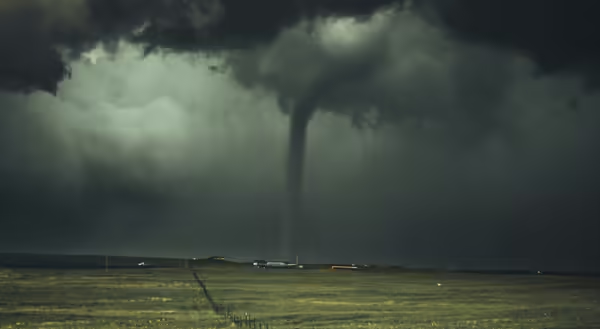
In today’s world, it appears that everyone has seen or experienced a tornado up close and personal, at least from all the video that is available on social media. The fact is many people have only seen pictures or video and have not experienced a real tornado. However, their chances may be getting greater in Illinois and farther south.
All 50 states in the U.S. have experienced a tornado, but the greatest frequency is in the Great Plains, Southeast U.S., and Midwest. Illinois has an average of about 54 tornadoes annually. Texas has the most, because it’s a huge state and is part of the traditional Tornado Alley, which runs from east Texas through Oklahoma, Kansas, and farther north.
2023 has already seen its share of tornadoes, and several of those have been deadly. At the time this blog is being written at the end of April, the United States has suffered 18 killer tornadoes, compared to the past 3-year annual average of 17. So far 63 deaths have been recorded, compared to a 3-year annual average of 64. We don’t know what the rest of the year will bring, especially since May and June are still significant months for tornado activity.
Is there a trend towards more tornadoes?
A recent study examined tornado frequency since the early 1970’s. The study, done by Northern Illinois University with assistance from the Severe Storm Prediction Center, showed that while the traditional Tornado Alley still has the greatest frequency of tornadoes nationwide, the frequency decreased. To the east, the states of Mississippi, Alabama, Arkansas, Missouri, Illinois, Indiana, Tennessee, and Kentucky, have increased. This area is being called Dixie Alley.
Sometimes I get the question, “Aren’t we just seeing or capturing evidence of more tornadoes than we did 50 years ago?” It is true that with more observers, that does influence overall numbers. However, researchers don’t just look at numbers, they have also examined the conditions that are favorable for tornadoes and found that those conditions have become more frequent as well.
Are these trends due to a changing climate? At this point scientists can’t say that these changing areas of tornado activity are due to this effect. No, this does not debunk climate change, it just shows that researchers have integrity in their work.
Fortunately, at least for Illinois, most of the increased number of tornadoes has been on the low end of the Enhanced Fujita scale, meaning the EF0 category of 65-85 miles per hour. Still enough to cause some roof and tree damage, but nothing compared to a tornado in the EF3 range of 136 to 165 miles per hour. EF 4 and especially EF 5 tornadoes are very rare in Illinois. Those two categories make up less than 2 percent of all tornadoes in the United States.